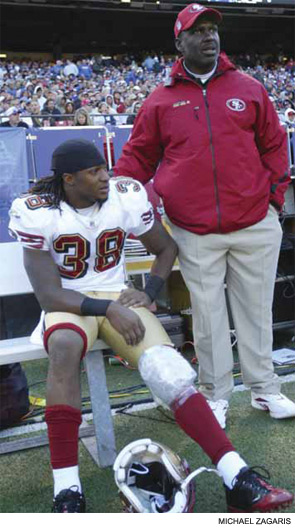Every day, on the sports page, along with the box scores, an injury report will appear because of its effect on the outcomes of upcoming games. So common are these injuries that the only interest they seem to engender is the effect on the betting point spread, the team’s win–loss record, or the prospects for playoffs. The influence on the athlete’s health or well-being receives scarcely a mention.
“If it doesn’t hurt, it doesn’t help.” Growing up playing sports, I heard that statement hundreds of times but it is filled with fallacy bordering on the criminal. When it comes to bones and joints, the reality should be “If it hurts, it won’t help,” or better, “If it hurts, it harms.”
Pain is the body’s warning system and was designed by Mother Nature to alarm the body of danger. By making a damaged part uncomfortable or unpleasant to move or use, nociceptive pain prevents further injury and allows healing. Nature exacts its price with pain, but the system is wise and works. Ignoring pain to an injured muscle or joint is risky and dangerous.

Modern Medical Marvels
Recently, I attended a medical conference on the worldwide burden of musculoskeletal disease, especially from joint trauma. During the presentations, I was struck by the frequency in which the trauma depicted was an athletic event. Since this was an international meeting, the most dramatic pictures featured soccer players engaged in vicious tackles. The scenes looked dreadful and, no doubt, a meniscus or anterior cruciate ligament (ACL) would disintegrate or pop under the hit. The speakers’ message was clear. After a few years, arthritis would strike those engaged in sports combat.
Most of the speakers at the conference were orthopedic surgeons and, when it comes to reconstructive surgery, these physicians are miracle workers. While, in the past, all the king’s horses and all the king’s men couldn’t do the job, if Humpty Dumpty were alive today, these surgeons could put him back together, toiling in the glare of the operating room lights, patching cracks in Humpty’s shell with some nifty adhesive, popping in a custom-made prosthesis to complete the jigsaw puzzle of the broken exterior.
Too often, in sports medicine, the perspective seems to be the next game or the next season and not the long-term health of the athlete. Indeed, in some trials on reconstructive surgery of the joint, the outcome of success for the intervention is the time until return to sports. Orthopedists and athletes are very much allied, especially since many orthopedists are former athletes and they believe in the ethos of sports. Knowing personally what a game can mean to an athlete, they share the desire for a return to the field. As long as the athlete can suit up to play, many sports medicine physicians seem willing to condone an athlete’s return into battle even if it is risky and can lead to further injury.

